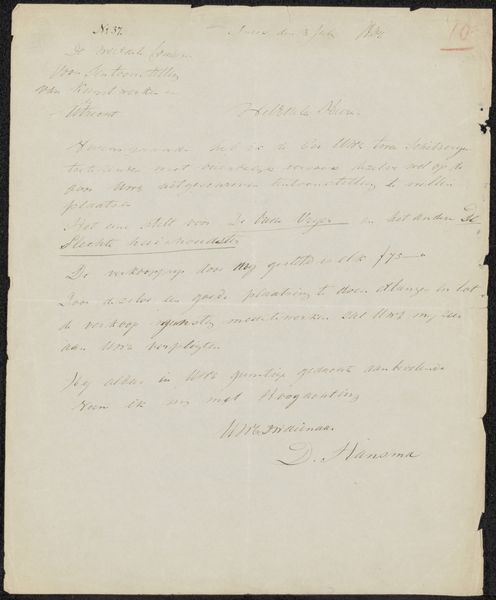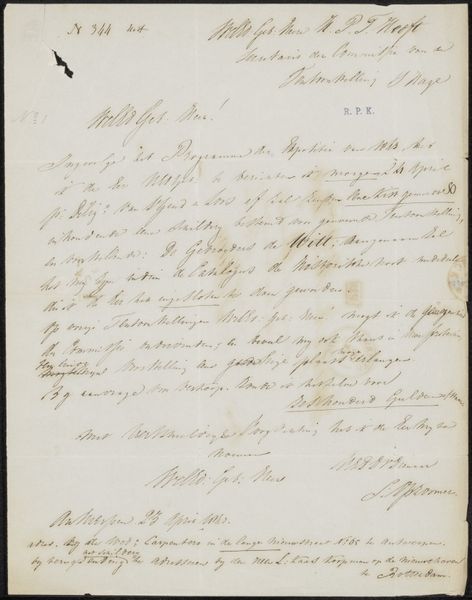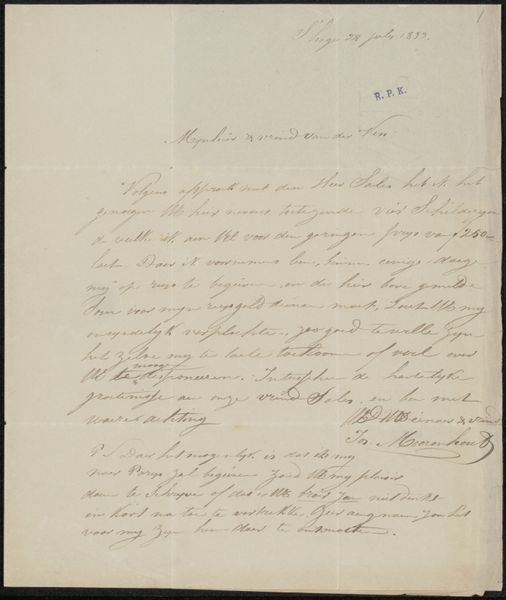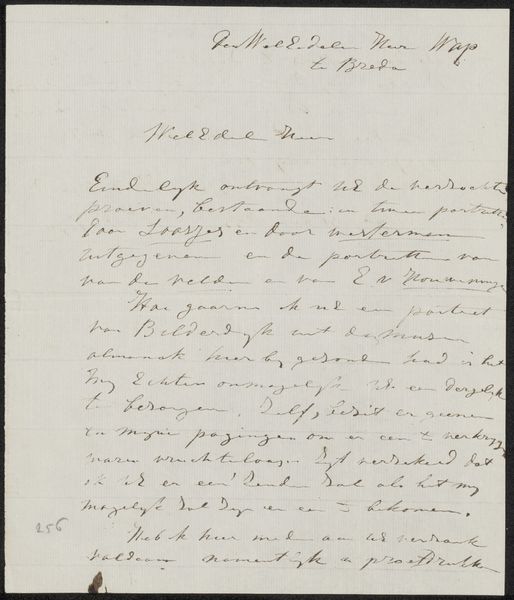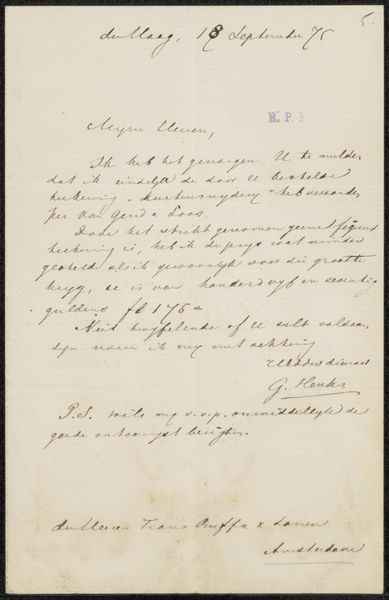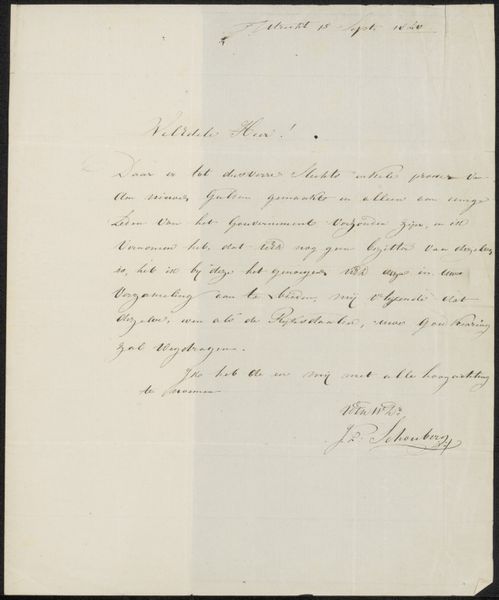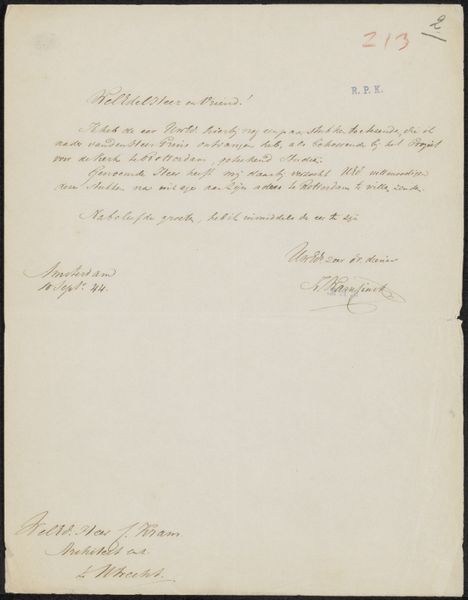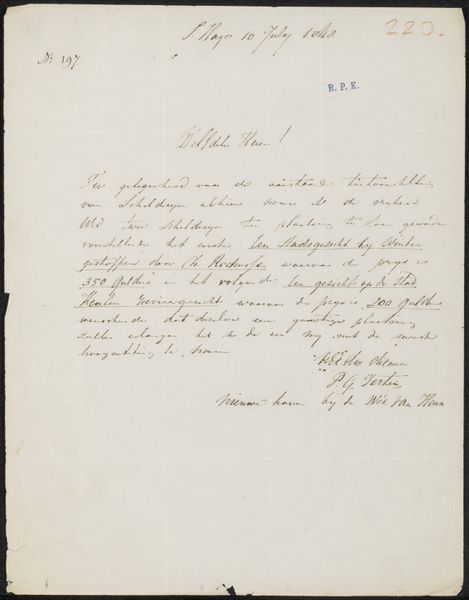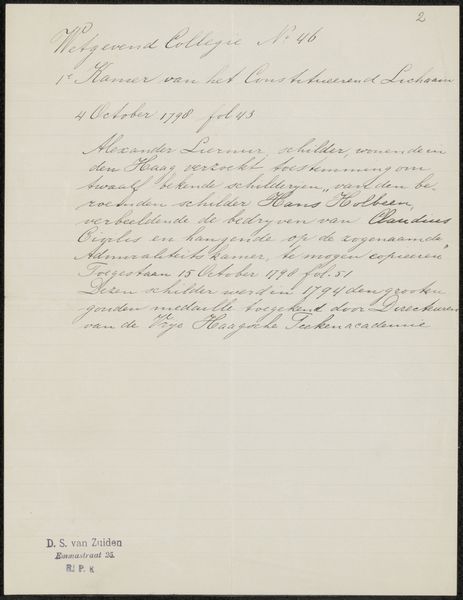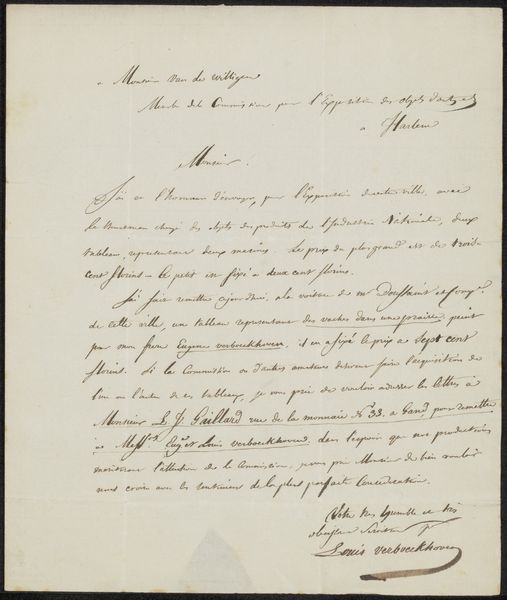
Brief aan de Commissie van de Tentoonstelling van Levende Meesters in Utrecht Possibly 1848
0:00
0:00
drawing, paper, ink
#
drawing
#
dutch-golden-age
#
pen sketch
#
hand drawn type
#
paper
#
ink
Copyright: Rijks Museum: Open Domain
Editor: Here we have "Brief aan de Commissie van de Tentoonstelling van Levende Meesters in Utrecht", possibly from 1848, by Johannes Pieter van Wisselingh. It's a drawing in ink on paper. It looks like a handwritten letter. What catches your eye about this piece? Curator: As a materialist, I find the materiality of the letter itself fascinating. Consider the social context: paper as a commodity, the ink as a manufactured substance, the act of writing itself as a form of labor. The means of production were quite different back then. Editor: So, you are saying to look at the process as a cultural indicator. How was that labor seen at the time? Curator: Precisely! This is a formal request letter. And letters themselves played a critical role in the art world's development, allowing artists to communicate and advocate for themselves. The act of creating the materials--making paper and ink accessible--as well as the skill to pen the communication held value. Does it give you a fresh perspective on how much effort was needed to send information in 1848? Editor: Absolutely. I never thought about a letter as a made object like that before! Curator: It shows that everything around this, not just the drawing itself, comes together and informs how it was meant to be presented and shared. Editor: I am beginning to think how it represents art being embedded within society and economics! Thanks. Curator: A different view from our initial understanding! That’s the value in critically viewing all labor and creation.
Comments
No comments
Be the first to comment and join the conversation on the ultimate creative platform.

